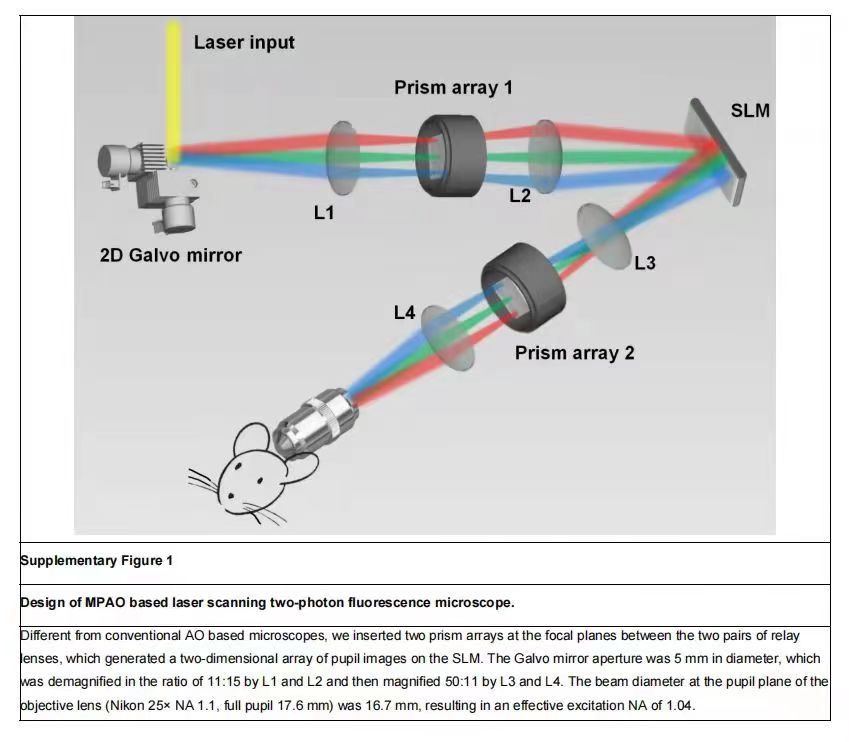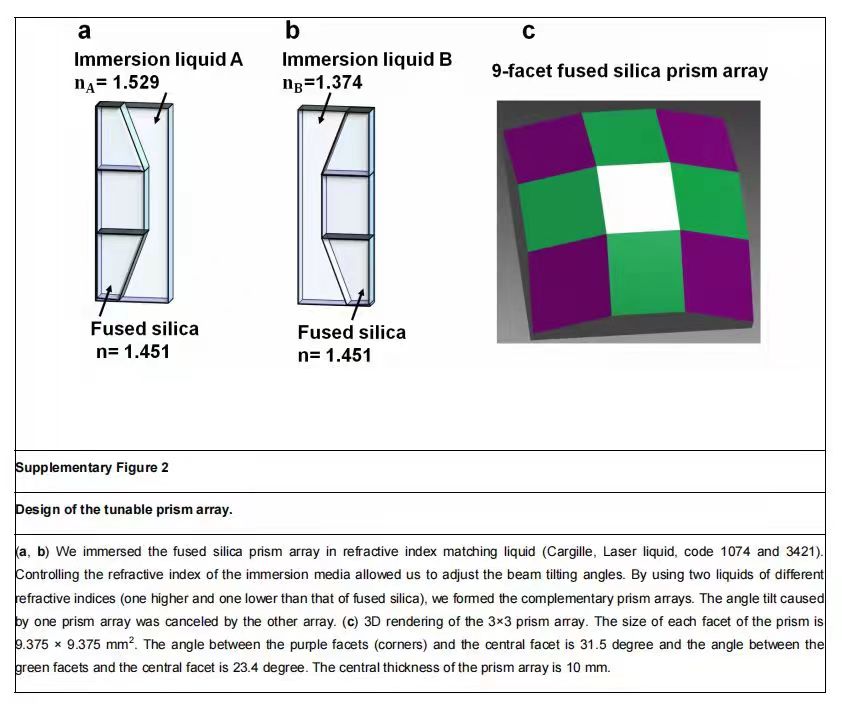Nature Methods | CPG Optics' Prism Arrays for a Large- Field-of-View Brain Imaging by Multi-Pupil Adaptive Optics
2017-12-09
By two sets of CPG Optics’ prism arrays as key components, Meng Cui at Purdue University invented a large-filed-of-view imaging system that can take high-resolution time-lapse images of functioning brain cells. It can simultaneously correct the distortion in different regions, and measure the data points up to 20 to 30 million every second.
With this MPAO imaging system, brain cells named microglia, signaling processes of neurons containing calcium, vasculature in the brain, dendritic spines, and those structures in neurons important to learning and communication can all be understood much better. Researchers can know more deeply on how the mammal brain works.
What’s this system’s design? See Figure 1.

As the key component of this design, each prism segment produces its own image according to a different part of a microscope's field of view. So how about the design of CPG Optics’ prism arrays? See following fugure 2.

For this findings’ details, Large-field-of-view imaging by Multi-Pupil Adaptive Optics - PMC (nih.gov)